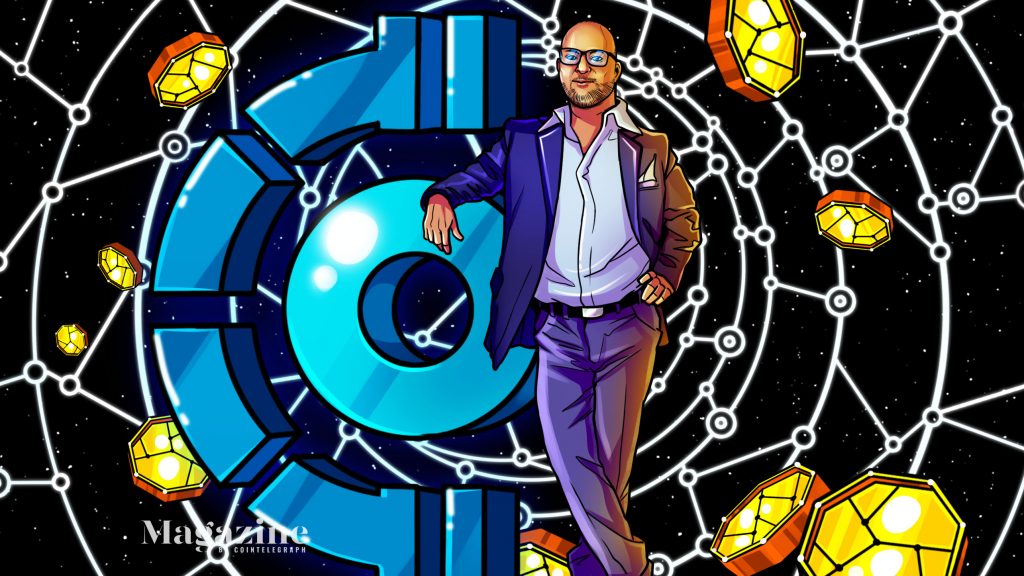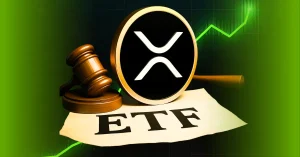Ralf Glabischnig on Crypto Valley and the Crypto Oasis – Cointelegraph Magazine

Having supported Zug’s Crypto Valley in the early days and founded Crypto Oasis in Dubai to serve as blockchain innovations hubs with regulatory certainty, Ralf Glabischnig is practically a node of the blockchain industry.
When Bitcoin companies began pouring into his small town in Switzerland in 2013, Ralf Glabischnig was an IT consultant turned entrepreneur running a coworking space. It helped turn the town into ground zero for some of the earliest crypto companies, the Ethereum Foundation among them.
Today, Glabischnig wears many hats, working across timezones to help build both Switzerland and the United Arab Emirates into regional powerhouses of the blockchain revolution. He holds decentralization dear to his heart — of regulations, companies and power — which he hopes will create an increasingly heavy counterweight to the powers that be.
Dubai
In many ways, Glabischnig sees places like Dubai and Zug as the long-foretold Bitcoin citadels of blockchain legend — secure cities catering to the nouveau riche of cryptocurrency.
“A few spots worldwide will attract the people who can afford it because it’s safe for their family — and those people bring the business.”
When it comes to Dubai as an emerging citadel of blockchain innovation, there is every reason to be optimistic. Last year, Glabischnig set a seemingly bold goal to see 1,000 blockchain companies in the UAE by the end of 2022 — a 90% increase in one year — but he now expects the number to be reached by summer. By comparison, Switzerland had 1,100 companies in 2021, after six years of being known as the “Crypto Valley.”
Glabischnig first visited Dubai in 1998. He recalls seeing the five- and six-story buildings going up in its internet and Media City district and wondering who would ever use them because “no one was here.” He’s been coming back annually since the early 2010s, now living between Switzerland and the UAE.
“Switzerland has decentralization in its DNA,” he says, explaining that tax structures are made locally, and the 26 Cantons — administrative districts — compete with one another to attract business. The consensus mechanism in Switzerland “is very similar to how a decision is made in a blockchain network,” he explains.

“People see an overnight success in Dubai, but even an overnight success needs a few years of preparation,” he adds.
Glabischnig, who has three children, explains that Switzerland and the Middle East have something in common — security. “In Dubai, you see people using their wallet to reserve a table while they go buy coffee — you can’t do that elsewhere, not even in Switzerland,” he says.
There is a difference, however, with the inherent safety of Swiss society coming bottom-up from the grassroots level, whereas in the Middle East, it is derived from the top-down via strict laws and advanced surveillance. Integration and bureaucracy, however, can be particularly difficult for foreigners coming to Switzerland, while Dubai accepts all nationalities, and almost anyone can simply pay for a visa, he notes.
Seeing the city as a ripe cradle for innovation, Glabischnig began looking for partners in the Dubai blockchain community in 2016. He envisioned “a hub where everyone comes together from the industry” and says that Marwan Al Zarouni, now the head of the Dubai Blockchain Center, and Saed Al Darmaki, CEO of Sheesha Finance, were early participants in the local crypto scene.
“We want to create a soccer field where the players congregate — then we can see which players are good, which to invest in, and which to avoid because they are playing fouls.”
Headquartered on one of the highest floors of the Almas Tower, the DMCC Crypto Center plays host to nearly 300 blockchain companies. For Glabischnig, it is the beating heart of the Crypto Oasis.
Glabischnig explains that while the idea of Crypto Valley encompasses both Switzerland and Lichtenstein with Zug as its heart, the Crypto Oasis consists of the entire Middle East, with Dubai at its center. “And the very heart is DMCC with over 280 companies, but I believe it will grow out of Dubai and into other countries here like Saudi Arabia and Bahrain,” he adds excitedly.
The DMCC, or Dubai Multi Commodities Centre, is a free zone. This means that it exists under special legislation, with companies incorporated there enjoying unique regulations and special treatment, including 0% corporate tax. With crypto as its newest field, the DMCC has a long history as a global hotspot for companies trading gold, coffee and diamonds between the East and the West.

One factor influencing Dubai’s success in attracting new companies, according to Glabischnig, has been its soft response to the pandemic compared to peers such as Singapore or Hong Kong, which all but shut down for months on end. “When you own the infrastructure, like Dubai owns the hotels, the airlines, the shopping malls and so on, then you think twice if you close it down,” he spells out.
Swiss time
Glabischnig lived in Germany for much of his career, during which he worked as a software consultant with consulting firms such as Accenture. In 2005, he accepted a job in Switzerland in order to gain experience as a project manager, moving to a small town with a beautiful lake called Zug. Glabischnig chose the city — which he describes as a tax haven — because it was halfway between his head office in Zurich and a major client in Lucerne. With his low salary, the tax rate did not move the dial, however.
In 2013, Bitcoin companies such as Bitcoin Suisse and Monetas began setting up in Zug owing to its regulatory flexibility. Back in the 1970s, Glabischnig explains, Zug started to grow wealthy due to the commodities business initiated by controversial Glencore entrepreneur Marc Rich, who was once indicted by United States authorities for breaking an embargo on Iranian oil. His business brought oil trading and even blood diamonds into the town’s economy, he notes, and “Zug has been open enough to give them space” — an openness that extended to Bitcoin, which, in 2013, still held a difficult reputation as a currency of the illegal drug trade.

“A big step in Zug becoming Crypto Valley was the Ethereum Foundation forming in Zug,” he reasons, referring to the group headed by Vitalik Buterin, who later received an honorary doctorate from the nearby University of Basel. The idea of organizing the project as a foundation to serve as Ethereum’s global headquarters came from lawyer Luka Müller, a friend.
“Müller had the idea to use the foundation system of Switzerland for blockchain projects, especially for layer-1 projects. I think this is the reason why we see a lot of the layer-1 blockchains set up in Switzerland as foundations,” Glabischnig explains, adding that Müller was paid in ETH for the assistance he provided in 2014.
In 2014, Glabischnig and his business partner Marco Bumbacher created the Lakeside Business Center, a coworking space in the center of Zug. As the city gained a reputation as a blockchain hub, “people started knocking on the door, asking if there were crypto companies here.” Seeing the demand was there, Glabischnig decided to put together Crypto Valley Labs, a dedicated space for the new industry helping blockchain startups incorporate and settle into the Swiss surroundings.
“We have not been the early innovators — we have been the supporters of the innovators.”
Crypto Valley
Before long, he became a founding member of the Crypto Valley Association, a local government initiative to promote the Canton of Zug as a node of the burgeoning global industry and the Swiss Blockchain Federation, which has similar aims for the country at large.
He played a key role in organizing a blockchain competition with a $100,000 prize, each year in a different category like banking, real estate, and insurance — with related companies invited to join as sponsors and judges. “We learned what the ideas in the blockchain space are” through the contest, Glabischnig recounts, explaining that he went on to create CV VC (Crypto Valley Venture Capital) to strategically invest in the industry.
“We saw that there is something else to invest in than just equity — there are these tokens, and we began investing in small amounts.”
In 2017, these contests evolved into Blockchain Summit Crypto Valley, the first of its kind in Switzerland. This being the time of the ICO hype, Glabischnig recalls that not only did participants pay to attend, but companies also paid to exhibit and reserve speaker slots, which did not quite sit right with him. “Everyone was paying to be at these events — this was a sign of big hype,” he reasons.
With hype came opportunity. The years that followed saw him play an increasingly influential role not only in organizing the industry from afar but also in being an entrepreneur. He is a founder and remains on the boards of ProofX, Inapay, GenTwo Digital and Tokengate and serves as a managing partner of Inacta. Glabischnig’s workdays span 18 hours, he tells me.
The internet era
Though Glabischnig came from what he describes as “simple family circumstances” in Austria, he was given one luxury: an Amigo 500 computer, about which he had been reading for months to the extent that he “knew everything in detail” before even opening the box. He put his skills to use in 1993, aged 16, with a business of creating flyers and later websites.
In 1995, he went to technical school to study software development and economics, the former thanks to his passions and experience, and the latter because he wanted to understand how to reach economic success beyond his childhood environment. “I needed a keyboard,” he notes, due to his bad handwriting. In those days, he describes, the internet was very slow, and one had to ”dial in” using special hardware — a modem. Back then, people were still figuring out what the internet could be used for. “The first thing we did was download pictures of Samantha Fox,” Glabischnig recalls of his early activities online.
“I came to the first internet era, and I like to compare this to the blockchain era today.”
Glabischnig’s career began with “a very boring problem — the year-2000 problem” at various banks and insurance companies, as he recounts his first job as a software developer at a consulting company. This problem, also known as “Y2K,” came about as the turn of the millennium approached, and computer programs were not configured to count years beyond 1999, leading to fears of a societal meltdown.

He soon began working on optimizing data transfers between organizations, including with a teledata system by which companies could automatically exchange information with the Swiss government. What interested Glabischnig about B2B data exchange at the turn of the millennium “is also what interests me today in the blockchain space” over 20 years later. He sees this trend as the “Internet of Value.” “While the Internet of Things involves all types of items connecting to the internet, the Internet of Value means that we are putting every object that has value on the blockchain,” he says with confidence. This might well mean a tokenization of everything.
Having moved away from the consulting world, Glabischnig is more fulfilled by what he calls venture building, something he’s been able to take part in as part of his venture capital role. “In IT consulting, you give advice and get paid, and if the customer isn’t doing what you told them to, you don’t get to wrestle,” he says with a laugh, as he goes on to elaborate:
“I’m always very open to invite people to work together, and I try to make small organizations” because he finds companies of around 20 people to be nimble, effective and a decentralizing counterbalance to the giants of Silicon Valley.
“I don’t like the centralization of power in Silicon Valley. That’s the reason I dedicate my time to building Crypto Valley and Crypto Oasis — to bring some of it back.”













